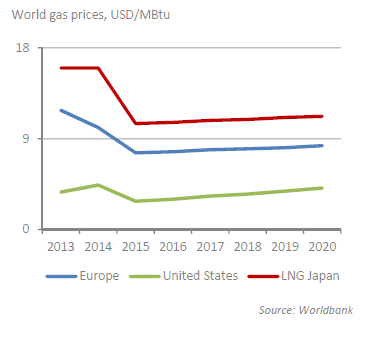
Natural gas consumption for electric power Real monthly Henry Hub spot prices have not averaged below $2.20/MMBtu on a sustained basis since March through July of 2020. In June, the Henry Hub spot price averaged $2.18/MMBtu, the third month in a row it averaged below $2.20/MMBtu. Lower natural gas prices in the first half of this year are a result of increases in dry natural gas production, lower-than-average consumption due to mild winter weather, and the resulting higher-than-average storage inventories. Last year, nominal prices averaged $6.42/MMBtu for the year ($6.65/MMBtu in real terms). benchmark Henry Hub natural gas spot price has averaged below $2.50 per million British thermal units (MMBtu) every month since February of this year. We expect storage inventories to end the injection season on October 31 at 7% above the five-year average. Storage inventories at the end of June were 2,900 billion cubic feet (Bcf), 14% above the five-year (2018–2022) average. natural gas inventories will reduce the surplus to the five-year average, which will put upward pressure on prices. With flat production and year-over-year growth in natural gas consumption, we expect U.S. dry natural gas production has been relatively flat in recent months, a production trend we expect to generally continue for the rest of this year. We forecast the Henry Hub spot price will continue to rise through the year. For 2023, we forecast the annual Henry Hub price to average $5.46/MMBtu for the year.We expect the Henry Hub spot price to increase in July to a monthly average of almost $2.60 per million British thermal units (MMBtu), a 19% increase compared with June. We forecast natural gas prices at the Henry Hub will begin to decline in the spring of 2023 as production growth continues and winter demand for heating subsides. We expect dry natural gas production to continue to grow, averaging 99.4 Bcf/d this winter and 99.7 Bcf/d in 2023. dry natural gas production has been increasing throughout 2022 and has averaged more than 98 billion cubic feet per day (Bcf/d) every month since June. We expect demand for natural gas at LNG export facilities to increase when the Freeport LNG terminal in Texas resumes partial operations in November, after it paused operations in June following a fire. We expect that higher demand for LNG exports-particularly in the Northern Hemisphere-will also increase natural gas prices. Throughout September and October, high volumes of natural gas injections into underground storage reduced the storage deficit to the five-year (2017–21) average from 11% at the end of August to 4% as of October 28.ĭespite lower Henry Hub spot prices since August, we expect natural gas prices to rise this winter as a result of seasonal demand for natural gas in space heating, which typically peaks in January and February. Prices declined to average $5.66/MMBtu in October following a period of strong dry natural gas production and several consecutive weeks of relatively large injections into natural gas storage. Henry Hub natural gas spot prices reached a peak of $8.80/MMBtu in August.

After the winter, we expect the Henry Hub price to decline in 2023 as production growth outpaces both domestic consumption and LNG exports. Our forecast reflects natural gas storage levels that are 4% below average heading into winter withdrawal season and more demand for liquefied natural gas (LNG) as the Freeport LNG facility comes back online. benchmark Henry Hub will average $6.09 per million British thermal units (MMBtu) this winter (November 2022–March 2023), the highest real price since winter 2009–10. In our November Short-Term Energy Outlook (STEO), we forecast that natural gas spot prices at the U.S. Energy Information Administration, Short-Term Energy Outlook (STEO)


 0 kommentar(er)
0 kommentar(er)
